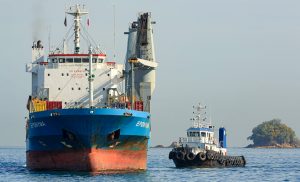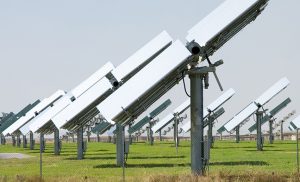Energy 2040
2nd Most Famous Graduate

Freedom High School
 Swarup grew up in the Lehigh Valley, attending Freedom High School. He says he is the second most famous graduate, noting Dwayne “The Rock” Johnson is No. 1. In the 1970s his parents immigrated to the area from India in pursuit of a better life. To help the transition, his father insisted they learn the game of football by watching it. The first game Swarup attended was Lafayette versus Lehigh. While he can’t remember who won, he does remember it was cold out.
Swarup grew up in the Lehigh Valley, attending Freedom High School. He says he is the second most famous graduate, noting Dwayne “The Rock” Johnson is No. 1. In the 1970s his parents immigrated to the area from India in pursuit of a better life. To help the transition, his father insisted they learn the game of football by watching it. The first game Swarup attended was Lafayette versus Lehigh. While he can’t remember who won, he does remember it was cold out.
How to Charge a Cellphone

 What’s the most important question for a teen with a new cellphone? Where to charge it. This is part of the energy equation. Energy needs are shaped by living standards of people. Today, energy is a tale of two worlds. One billion people have no access to power while 2 billion still rely on biomass (like wood) for cooking. Such undeveloped locales contrast with developed households where the push of a button or a voice command to an electronic device turns on a TV. But as members of the middle class grow across the globe, their purchasing power necessitates more energy generation. India and China lead middle-class growth. As more people seek a better life and the products associated with it, a complex question remains: How will we grow our energy to meet those demands?
What’s the most important question for a teen with a new cellphone? Where to charge it. This is part of the energy equation. Energy needs are shaped by living standards of people. Today, energy is a tale of two worlds. One billion people have no access to power while 2 billion still rely on biomass (like wood) for cooking. Such undeveloped locales contrast with developed households where the push of a button or a voice command to an electronic device turns on a TV. But as members of the middle class grow across the globe, their purchasing power necessitates more energy generation. India and China lead middle-class growth. As more people seek a better life and the products associated with it, a complex question remains: How will we grow our energy to meet those demands?
Oil Wins

 Economics and policy are married in order to get the right mix of energy. Oil will remain the primary fuel through 2040. As more people enter the middle class, demand for products will increase the creation and shipment of goods. Transportation and manufacturing industries still rely on oil. Its energy density is what’s needed to power planes, trucks, and cargo ships to move freight. Consumer preferences shape product demand and governing policies. Americans like SUVs even as hybrids and electric car sectors will grow the most. Energy also impacts trade since the energy sources or products that a country needs may not align with the resources it has available to make or acquire. So expect more investments in how to discover, extract, and transport fuel sources so as to keep supply and demand in balance.
Economics and policy are married in order to get the right mix of energy. Oil will remain the primary fuel through 2040. As more people enter the middle class, demand for products will increase the creation and shipment of goods. Transportation and manufacturing industries still rely on oil. Its energy density is what’s needed to power planes, trucks, and cargo ships to move freight. Consumer preferences shape product demand and governing policies. Americans like SUVs even as hybrids and electric car sectors will grow the most. Energy also impacts trade since the energy sources or products that a country needs may not align with the resources it has available to make or acquire. So expect more investments in how to discover, extract, and transport fuel sources so as to keep supply and demand in balance.
Finders Keepers


Concentrated photovoltaic power plant, Spain.
Natural gas use continues to grow and outpace coal because it burns cleaner and has the density needed to power transportation, like regional buses and garbage trucks. But if you study the life cycle of natural gas, there is little trade. Why? Costs are too high. It would entail turning it into a liquid, transporting it, returning it to gas, and then transporting an empty vessel back to be refilled. That’s why some products like gas are used where they are found. Electricity use, like gas, also continues to increase. This increase will help power economic growth and development, but the types of energy used to produce electricity will be a balanced mix of coal, natural gas, nuclear power, wind/solar, and other renewables. Countries will have to figure out how to best achieve that balance.
The Wildcard


Harvesting algae.
Technology holds the greatest potential and the highest uncertainty. It’s important for us to train, encourage, inspire, and fund scientists to help us find new ways to do more with less. Consider how LED bulbs, new car designs, and winglets on airplanes are saving energy. At ExxonMobil, teams are choosing where we want to work based on advancing the most scalable solutions. One area is advanced biofuels, which are non-food based. So rather than corn, using corn silk. Rather than sugar cane, using the husk. Algae as a fuel source is showing great promise but is decades away from being scalable. Another is carbon capture storage. How do we best separate CO2 and capture it in a fuel cell? Like any innovation, we must start by defining the problem and then deciding how to best approach a solution.
Liberal Arts Solutions

College students will solve these problems. Their minds are needed along with their optimism and enthusiasm. The topic of energy demands a well-rounded thinker as it combines economics, policy, innovation, technology, and engineering. It covers the full range of liberal arts. Universities are the birthplace for ideas. While those ideas are on a smaller scale, industries can help give those ideas a multi-scale approach. ExxonMobile works with national centers and partners with colleges to grow ideas. Those thinkers must take a long-term view since the solutions will take years to implement.

Chemical engineering class at Lafayette College.
Chemical engineering and international studies major, Danhui Zhang ’18 attended the lecture and met with Swarup beforehand where she asked him questions about graduate schools and how academic discoveries can help corporate research. “I was glad to speak to someone as friendly, personal, and knowledgeable as Swarup from such a notable corporation,” says Zhang. “He truly motivates me to study harder and be optimistic about future research.”







